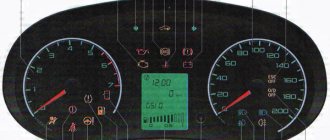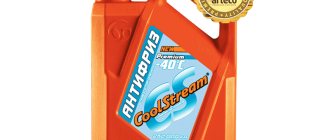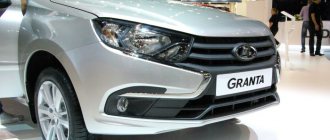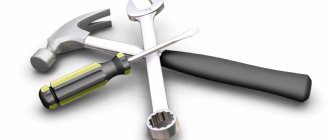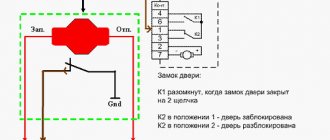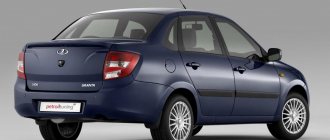04 March 2015 Lada.Online 57 502 15
In October 2011, serial production of the Lada Granta sedan began on the AVTOVAZ assembly line in Tolyatti. After this, the assembly opened in Izhevsk. Later, a new car body called “liftback” was introduced. Its production was launched at IzhAvto. Where are Lada Grantas produced at the moment?
You can track the assembly location of the Lada Grant using the following chronology:
- On May 16, 2011, the assembly of the Lada Granta sedan began in Tolyatti.
- Since mid-2012, production of the Lada Granta sedan was opened at OAG LLC in Izhevsk (IzhAvto).
- On May 14, 2014, serial production of the Lada Granta Liftback began at IzhAvto, and the production of sedans ceased.
- Starting from 2015, the production of Lada Granta is planned to be completely transferred from Izhevsk to Tolyatti.
- In March 2022, the production of the liftback was transferred from Izhevsk to Tolyatti.
- Since 2022, the new Granta has been produced in addition to Togliatti at Chechenavto (instead of Priora).
Assembly Features
The peculiarities of the Granta assembly are that, almost for the first time in the modern history of the brand, a fully automated and robotic assembly line was used, on which little depends on humans. The line was fully equipped with modern welding robots. Since checking the geometry of the finished body was completely entrusted to automatic control systems, the quality of the final product increased significantly. Since then, the gaps on Lada Granta bodies have been smooth, without distortions.
A distinctive feature is also the high-quality anti-corrosion treatment. It is especially good on the Sport version, which, according to the manufacturer, is distinguished by its particularly durable body.
In addition, this Lada model uses a large number of high-quality imported components. Due to this, the management of the enterprise was able to significantly increase the reliability of finished machines. Unfortunately, this approach did not take long to affect the cost. Thus, the Standard package today costs almost 400 thousand rubles, and the cost traditionally continues to rise.
However, the quality of cars is also growing, and AvtoVAZ (something incredible!) has already recalled batches of cars several times to eliminate identified defects.
Is the “packaged” Lada Granta worth the money?
LADA > Granta
Page 5
The Lada Granta Club continues to introduce readers to the detailed characteristics of the new Lada Granta sedan. This review will be devoted to the front and rear suspension of the Lada Grant, as well as their influence on the handling and driving performance of the car. Especially for the new model, AVTOVAZ designers have modernized the front and rear suspension.
Front suspension
For Lada Granta, which will be equipped with power steering (these are “standard” and “luxury” configurations), the front suspension caster is increased. It will be 2°45'. According to the developers, this will significantly improve the vehicle's directional stability. At the same time, an increase in caster also entails an increase in the applied force on the steering wheel.
Therefore, such versions of Lada Granta will be equipped with power steering with increased compensating torque. In order to reduce the number of steering revolutions to 3, a “short” steering rack will be installed on the Grant. This rack will also improve the car's handling.
In the “standard” configuration, the Lada Granta will be produced without power steering; accordingly, it will have a standard caster of 1°40'. In addition, in this configuration a conventional steering rack will be installed and the steering wheel will retain the number of revolutions equal to 4.
When modernizing the front suspension, a new strut module was also developed, which now has a modified design and modified characteristics of the upper support. Also in the front suspension of the Lada Granta, the body supports and anti-roll bar are strengthened.
Rear suspension The most progressive step of AVTOVAZ in the production of serial Lada Granta will be the factory installation of a rear suspension with a negative camber angle. The angle will be (-1°), in addition, its adjustment during operation will not be required.
Lada Granta liftback
Multimedia system with 7-inch touchscreen, navigation and Bluetooth support. Light and rain sensors, heated windshield, electric drives for all windows, climate control and even cruise control... Active safety is guarded by ABS, EBD (brake force distribution system) and ESC (exchange rate stability system). Passive airbags are provided by front airbags and three head restraints in the rear seat. Of course, there are such simple options as central locking, heated front seats and Isofix mounts in the rear. And yes, all this is a modest Lada Granta liftback, albeit in the top-end “Lux/Navigation” version. Until recently, such a car cost 571,200 rubles, but after the New Year’s revision of the price list, the price rose to 586,200 rubles. Agree, it’s damn tempting to get such a set of options at such a still attractive price. But is all this necessary in Grant?
Granta, how it is made from :)))
Hi all! I decided to shed light on all the details of the car. Since I have enough experience in production, I will open the curtain. How and what is done :))))
The lights are produced by AVTOSVET LLC. Dimitrovgrad. Avtostroiteley Ave. 78 (I think). Now it’s not just a factory, but an entire industrial garbage park. Why garbage because everything is through F... well, you understand. And so the headlights are cast in a mold, or rather, the headlight glasses are cast in molds on TPA (Thermo-plastic-automatic machines) (I have publications about production in the Priori Blog)
This is how the Granta lantern body was born.
This is how the glass of the viburnum tail light is born
then they are coated with varnish, here is a video
Then the paint booth operator comes inside. It is blown with air. And after which she continues to work in the chamber.
in the video we see how the robot sprays varnish, and the operator’s task is then to remove the headlight glass and send it off for assembly.
Here the video is short, but it is clear that the headlight glass is leaving for assembly, where already in the headlight housing (Black body) a sausage sealant is applied by the smart German robot Engel. :))) Installed to dissipate, etc. Then the headlight is assembled and sent to the ShTS drying cabinet. Where it is baked under heat for N amount of time.
Lada Granta liftback
The Itelma multimedia system does not raise any unnecessary questions at first acquaintance: it has an adequate menu structure, tolerable performance and a normal touchscreen sensor. You just have to turn off the multimedia manually every time - it doesn’t “stall” along with the machine. Moreover, I don’t know why AVTOVAZ needed this head unit in the first place - after all, the Lada-Renault-Nissan alliance has access to the LG multimedia complex (this is installed on XRAY, Logan, Kaptur and Duster), which is superior to Itelma in both graphics and performance . Is Korean multimedia really more expensive?
Paint shop
This is scale. You walk and think: will it ever end, huh? And the desolation is striking: many operations are performed automatically and do not even require human control. Plus, most of the workers are hidden in cells; they can only be seen through cloudy glass.
No matter how we now feel about SOK and Yuri Kachmazov personally, all this splendor was built by them, with their money. They didn’t even have time to really use it: three years of assembling three KIA models for such equipment was just a run-in.
The very beginning is the arrival of the “black” body from the welding shop and its joining with the edging (funny word, right?) conveyor (in professional slang - skit).
At the monastery, the body will undergo all operations to prepare the surface for the actual painting.
So, the body is sent for processing, which consists of washing and degreasing with special surfactants (surfactants) supplied by the German company Chemetall.
It is behind these opaque walls of the preparation unit that the mystery of body processing begins.
Then another rinse with water follows, it removes the remaining surfactants. And washing with activating compounds that act on the surface of the metal, as if “loosening” it at the molecular level. This allows for more active interaction with the reagents of the next stage of processing - washing in a phosphate bath (compounds based on orthophosphoric acid). This all ends with a three-stage washing with specially prepared (demineralized) water. This water circulates in a closed circuit until it develops cleaning properties. The composition is enough for about one shift; at night it is dumped into the wastewater treatment plant.
The in-plant wastewater treatment station has a cascade of press filters in which dry sludge remains. It is disposed of, and the water goes further to neutralization. Some of it is then returned to the washing process.
After phosphating, which is de facto the first stage of priming (since small foci of corrosion are transformed into stable non-corrosive compounds), the body enters the catophoresis line. That is, electrostatic deposition of soil. High voltage is applied to the solution - it’s better not to stick your fingers in there. All doors are equipped with sensors: when opened, the automation removes tension from the bath and stops the conveyor.
Here you can already see the process, at least through glass. Here the body is immersed in the bath...
...and floats back out.
In general, there are six cataphoresis baths. In the first, the main process occurs, then several stages of washing with an ultrafiltration solution, which is obtained from the splitting of the soil itself into liquid and viscous fractions. Next is rinsing with demineralized water.
The body, which has gone through all the stages of cataphoresis, stands on a rocking table, which tilts it forward and backward by twenty degrees so that the remains of all liquids drain from the cavities. The body can now be sent to the drying oven.
All this equipment is controlled by automation in the form of a huge cabinet along the wall.
The length of the oven and the speed of the conveyor are just enough to ensure normal drying at 200 degrees Celsius - this is the hottest section of the entire painting line. For obvious reasons, they didn’t let me inside... The drying itself takes 1 hour and 15 minutes. And all stages from the first washing to leaving the oven last 2 hours 13 minutes.
It is cataphoretic priming that is the basis of the car’s protective anti-corrosion layer; the durability of the body depends on its quality. The coating thickness specified by the technological cycle is 20-24 microns. At Izh-Avto, as they say, they do not skimp on soil and slightly exceed the thickness, up to 28 microns. This better protects the metal. Primers are supplied by PPG. They also go to Tolyatti to paint B0 cars (Almera, Largus and Logan/Sandero).
The time has come for the body to pass through gentle female hands (for some reason only women work here), who will perform several additional protective manipulations with it - sealing the joints with polyurethane sealant, closing technological holes with plugs.
The sealant is applied to the flanges of all doors and hood covers and to all internal joints of metal parts.
The next section is the application of anti-noise materials, cellulose-bitumen. They are simply laid out in the right places, so that later, in the next oven, they themselves “flow around” the relief and stick to the ground.
Now the body moves to the area where the sealant is applied to the bottom.
All joints are processed here in the same way.
The lower parts of the doors are protected with film and masking tape, because further on the bottom will be applied anti-noise mastic.
The mastic itself is applied in a closed chamber, manually, with a conventional sprayer.
Now you need to go through another oven, in which the sealant and mastic polymerize and become hard, and the soundproofing materials melt and stick to the right places. The bodies come out of the oven rosy and refreshed.
Now it's time for the process called painting.
Before this, the body must be wiped with special wipes to remove static tension.
Then the inside of the body is manually painted in two layers.
On the painting of the front surface there are two groups of robots, sequentially working in an electrostatic field and by spraying.
And the third group of robots applies clear varnish
Izh-Avto uses a two-layer technology - base + varnish. But the base can be different, including with a metallic shade (filled with aluminum powder, the particles of which acquire a certain direction under the influence of an electrostatic field). There is a base filled with fine particles of mica and quartz; it looks even more impressive than the usual “metallic”.
There are currently six colors in the works. The range is formed based on requests from dealer centers and it completely replicates the VAZ one. The enamels used are from PPG. For each color there is a separate subsystem (communication system), so the transition is carried out quite quickly.
That's all, the body has acquired an almost finished appearance. The total thickness of the paint coating is 93 microns for regular color and 150 for metallic (the base is thicker there).
Now – final check and cleanup.
At the end of each shift, randomly selected bodies are checked for coating thickness, its hardness and compliance with the reference color. There is even a standard body in the workshop.
The last operation is to apply 3M decorative black film to the body pillars and doors.
Now the body can be sent to the assembly shop.
Lada Granta liftback
The USB port located on the inside of the glove compartment leaves an unpleasant aftertaste. The uneven force on the “wings” of the climate control unit and the fittings from even earlier VAZ cars (admire the handbrake handle) are also frustrating. The abundance of silver was added: it is present on the panel elements and the shagreen plastic of the door handles. According to someone's good intentions, such a decision should have given the salon more solidity, but in fact it had the opposite effect. The interior of the Granta lags behind the exterior and every second reminds you that you are sitting in a very budget car.
Welding shop
The welding shop employed 350 people before hatch production began. Now the staff is being expanded to 668 people. This only refers to the welding of Grants; Nissan bodies will be “welded” in another building, where new equipment is being installed right now.
The base of the car is its floor. On the liftback (we will call the Grant-hatch that way, this is its official designation) it consists of three parts, front, middle and rear. Actually, the body welding process begins with the joining of these elements.
In this area, you can “weld” the floors of both a sedan and a hatch; it is enough to replace one stand where the “tail panel” (in factory terminology) is welded.
Welding is done manually, using ordinary pliers.
It turns out, in the end, this is the detail.
Then it is joined to the front part:
This is what it turns out.
This is the base of the floor of the future car. Five parts are sequentially attached to it - the rear wheel arches, sill reinforcements and the engine compartment, assembled earlier.
Now we need to make an add-on. To do this, the entire mentioned kit enters the automatic welding line for the body base.
A little to the right of this process is the sidewall welding section, on the right, of course. And the left one is made from the left.
The configuration of the workshop turns out to be extremely rational: while the base is being cooked, the sidewalls are being manufactured in parallel. And then they are simply brought up, each from their own side.
Now the main body parts are docked:
And robots come into play.
The supplier of robotics is the Volzhsky Machine-Building Plant, which used to be part of the VAZ structure, but under Komarov gained independence. But all the same, the VAZ divisions remain the main customer of VSW. Izh-Avto also has industrial robots from Kuka, although not many.
Now the body moves from the floor conveyor to the overhead conveyor. And it goes through the stage of finishing cooking manually. This is because robots cannot reach all the right places. Plus savings on robots; plus a person does some operations faster. Both resistance and arc welding are used.
Next, some parts are bolted to the front.
Then the body assembly line begins.
The doors and hood cover are welded....
Here you need to take a short break and go to the door assembly area.
Here the door halves are assembled and rubber dampers are glued on.
There are consumer complaints that corrosion develops under the damping pads. In principle, if the workshop is dry and the material is well rolled, then there will be no corrosion there for a hundred years. But foil rubber is placed just like that, without heating or rolling - that’s how it’s supposed to be. Now VAZ is going to switch to a more progressive damping method, with the introduction of magnetized metal shavings into the material, which will hold it on the surface and prevent it from “sliding” during hot drying. Such patches can be applied after cataphoretic priming.
Then the frame and front panel are fastened:
And they send the door for rolling. The plant is proud of this Kuka machine. Everything looks impressive: the machine itself picks up the door from the cradle, transfers it to the desktop - and two manipulators with rollers begin to “circle” the door around the perimeter, compacting the rolling. Pressure at the point of contact – 130 kg!
Now we return to the body assembly area. The hinges, screwed to the doors on one side, are welded to the desired location in the doorway on the other.
I asked if it would be easier to first weld the hinge and then screw the door to it? No, they say, it’s not easier, you’ll be tortured to “position” the door in the opening, with optimal gaps.
The door is on special devices...
...brought to the body...
...and screw it on. First the rear side ones, then the front ones. Now you can begin to fine-tune them...
...using simple tools...
...and finish some other things with a hammer.
You can go further.
Next is the installation of the fifth door, the only galvanized part of the liftback body.
No manipulators for you, everything is done manually.
By the way, galvanized rear fenders will soon be added to the rear door. But in the Granta sedan there is not a single galvanized part.
You can install the last part - the hood cover.
I was glad that the factory workers did not simplify the name of this part and just said “hood cover”. Because the hood is something completely different.
Now the body needs to be wiped with a dry calico cloth.
– and send it for straightening.
Then it is wiped and vacuumed again - the abrasive straightening products must not get under the paint layer.
The body is ready. We follow him to the paint shop.
Lada Granta liftback
But the back row pleased me. Despite the sloping roof, there is no less headroom here than in the Ravon Nexia sedan (aka the previous generation Chevrolet Aveo). Thus, even with a height of 185–190 cm, you can fit quite comfortably. Riding in the back won't cause any discomfort either, although Grant's shoulders feel a little tight. The same Renault Logan is noticeably more spacious in this sense. The Granta liftback makes up in part due to its spacious trunk. In pure volume, it is inferior to Loganov’s 4 liters (396 liters versus 400 liters - according to our measurements), but in terms of convenience it is many times superior. An assembled bicycle for an adult or fairly large household appliances can easily fit here.
What is the outcome and what are the prospects?
The car will remain quite spacious and in neutral color tones.
As you can see, the Volzhsky Automobile Plant does not spoil its fans too much with new products and updates.
But for 400 basic thousand we can buy a Grant to move from point A to point B, change consumables cheaply (but often) and fill up about 6-8 liters every 100 kilometers. Of course, we won’t feel much driving pleasure or comfort, but for that kind of money we can afford either the same Kalina with Priora, or a basic Chinese one.
By overpaying 140 thousand you will be able to get a brand new Logan or Datsun OnDo , but these cars are actually assembled from one set of spare parts. At the same time, the Granta wins in trunk volume (in the liftback version) and a spacious interior, but loses in build quality, 155 mm ground clearance and antediluvian engines. Good luck to everyone in choosing the right new car and smooth roads!
Lada Granta liftback
Under the hood of our car is a 1.6-liter sixteen-valve engine with a power of 106 hp. I must say, the engine is good. If the robot had not wasted his talents, our liftback could easily be called one of the most dynamic cars in the class. Not in seconds, but in sensations. With all this, the Granta is very economical: actual fuel consumption was 7 liters of fuel on the highway and 8.5 l/100 km in the city. Part of the reason is that the car is quite light. Our measured curb weight is only 1097 kg. The main competitors are 50–100 kg heavier.
Changes in the Lada Granta for the 2022 model year
Judging by photos from the Internet, there will be significant changes in the appearance of the car.
According to tradition, AvtoVAZ is in no hurry to part with old engines from thirty years ago.
with four-cylinder gasoline injection naturally aspirated engines , which have long been known since the days of front-wheel drive eights and nines . According to another Togliatti tradition, rumors were spread about the introduction of a 1400 cc 16-valve turbo engine with a capacity of 90 horsepower, but so far there is no confirmation of this and is not expected.
Engines
Therefore, four types of engines will continue to be installed on public sector vehicles, depending on price and configuration:
- The simplest gasoline 1600 cc engine with 81 hp. with an eight-valve block head . It is this kind of engine that everyone has been familiar with since the late 80s of the last century from the VAZ 2108 car. Over thirty years, engineers increased the engine volume from 1.5 to 1.6 liters, lightened the piston and installed an injection system. Thanks for that too. The main advantage of this engine is the reliable design of the gas distribution mechanism. At the same time, you don’t have to be afraid that if the timing belt breaks, the pistons will meet the valves. Otherwise, it’s hello from 1985. Its index is VAZ 11183.
A more powerful modification of the previous engine, in which a broken belt costs a pretty penny.
Power unit with a 16-valve cylinder head.
Improved engine with 106 horsepower.
Transmission
As for gearboxes, everything is the same here too.
- We are offered a manual five-speed Tolyatti gearbox , and an alternative to it is a Nissan robot with four ranges paired with a 106-horsepower engine.
- It is rare to find an automatic transmission that is bolted to a 98-horsepower engine.
For the eight-valve and 106-horsepower engine, only a 5-speed manual transmission is available.
Lada Granta Sport
Sports version of Grants.
Sometimes the Lada Granta Sport goes on sale, which is distinguished by its external elements, suspension with gas-filled shock absorbers and a Priora engine boosted to 118 horses.
The price of Grants Sport at the beginning of 2022 was approximately 580,000 rubles.
Lada Granta liftback
The energy intensity of Lada suspensions is beyond praise. Grant copes with broken asphalt and primers under the wheels no worse than Logan, whose suspension sings praises with amazing frequency. The only pity is that in terms of handling, the “Russian” is not up to par with its main competitors. There is much less feedback on the Granta's steering wheel than I would like. And even at decent speeds, the steering wheel is annoying with a frightening weightlessness. There are no questions about the effectiveness of the brakes, but not everyone will like the nonlinear force on the pedal.
Is this Grant worth the money? Everyone will answer this question for themselves. If a long list of options warms your soul, then why not? Yes - many of them do not work perfectly, but in general such a car has a right to exist. If you are interested in my opinion, I will never buy such a car for my family - fortunately, there are more than enough options even in this budget. For the same money you can buy a slightly more modest Grant (or Datsun) with a classic Jatco automatic transmission. Or you can refuse the automatic transmission, pay an additional 50 thousand rubles and buy something from the Volkswagen Polo - Hyundai Solaris - Kia Rio combination. With a manual transmission, a pair of airbags, simple air conditioning and front electric windows. This whole trio drives much more thoroughly, and each of these cars is made with great respect for its future owners. For me personally, these qualities are more important than the navigation system and cruise control. And for you?
Engine and transmission
It is not typical for a budget car to have a full range of engines and transmissions. A number of engines are offered for the Lada Granta to suit every taste and budget:
- Engine 1.6 8-valve, 82 horsepower;
- Engine 1.6 8-valve with a lightweight connecting rod and piston group, 87 horsepower;
- Engine 1.6 16 valve, 98 horsepower;
- Engine 1.6 16 valve, 106 horsepower.
There are also several transmissions, starting with the usual five-speed manual, ending with a torque converter automatic and a robotic gearbox.
Lada Granta became the first car on the market under the Lada brand to be equipped with an automatic transmission.
Its presence allowed it to win the wallets of buyers in big cities, since it was the cheapest car on the market with an automatic transmission.


